
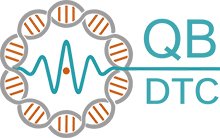
Quantum effects in photosynthesis
Photosynthesis is a process that is vital to all life on earth, with a 3 billion year evolutionary history of plant life photosynthesising both on land and deep in the ocean. During photosynthesis, light coming from the sun is converted into usable chemical energy. Studying photosynthesis allows us to understand this incredibly important process in more detail, as well as potentially using mechanisms in futuristic solar cells.
Overview
Although the overall process of photosynthesis is fairly inefficient, with a practical maximal efficiency of light to energy conversion of 8-9%, the initial step of capturing a photon with a light harvesting molecule and the transportation to a reaction centre happens with an efficiency of near unity [1,2]. There has been speculation for many years that there are quantum effects present in photosynthesis, with the unexpectedly high photon capture efficiency quoted as a reason. Quantum coherence present in antenna complexes would allow for fast and efficient excitonic transport required for the observed efficiencies, due to a possible wavelike search of paths from the exciton location to the reaction centre [3].
Long-lived quantum coherence in photon transfer is supported by experimental observations such as the interference oscillatory signals present in ultrafast optical spectroscopy experiments carried out on the Fenna-Matthews-Olson (FMO) protein [4]. This view, however, faces continuous controversy and is challenged by other observations in which the oscillatory signals are not present leading to the proposal of alternative mechanisms of energy transfer. Investigating whether quantum mechanisms are involved in the initial photon capture by the antenna complex of different microorganisms apart from green-sulphur bacteria represents one of the methods that would contribute greatly for elucidating the phenomenon.
Current projects

Investigation of quantum coherence in bacterial photosynthetic systems
Virginia Tsiouri
Postgraduate researcher
Project description
Photons are ubiquitous in nature and photosynthesis is one of the most vital processes of life. Elucidating the mechanism of light energy harvesting has been one of the most widely researched scientific areas with experimental data recently pointing to the hypothesis that quantum effects play an active role in explaining the extremely high efficiency of this process.
In this project the aim is to investigate the role of vibrational motions in coherent energy transfer of the light harvesting complexes of the photosynthetic, purple bacteria Rhodobacter sphaeroides. In order to test this aspect of photosynthesis, heavy isotopes will be incorporated into key atoms of the photosynthetic pigments using metabolic approaches and then purified and examined to detect any changes in their optical properties and the efficiency of photosynthesis.
Supervisors
- Primary supervisor: Professor Johnjoe McFadden
- Co-supervisor: Dr Youngchan Kim.
Research team
University of Surrey
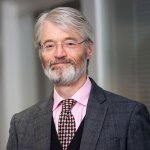
Professor Jeremy Allam
Professor of Ultrafast Optoelectronics

Dr Youngchan Kim
Lecturer in Quantum Biology, Director of the Quantum Biology Doctoral Training Centre (QB-DTC)
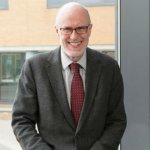
Professor Johnjoe McFadden
Professor of Molecular Genetics, Associate Dean (International)
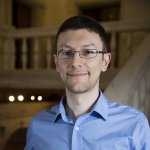
Dr Marco Sacchi
Associate Professor and Royal Society University Research Fellow in Physical and Computational Chemistry, Theme Leader in Sustainable Energy and Materials Research
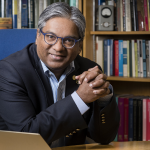
Professor Ravi Silva
Distinguished Professor, Interim Director - Institute for Sustainability (IfS), Director - Advanced Technology Institute (ATI) and Head of NanoElectronics Centre
External institutions
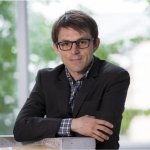
Dr Jose Jimenez Zarco
Senior Lecturer in Synthetic Biology, Imperial College London

Professor Alexandra Olaya-Castro
Professor of Physics, University College London
References
[1] Bolton JR, Hall DO. The maximum efficiency of photosynthesis. Photochemistry and Photobiology. 1991 Apr;53(4):545-8.
[2] Panitchayangkoon G, Voronine DV, Abramavicius D, Caram JR, Lewis NH, Mukamel S, Engel GS. Direct evidence of quantum transport in photosynthetic light-harvesting complexes. Proceedings of the National Academy of Sciences. 2011 Dec 27;108(52):20908-12.
[3] Engel GS, Calhoun TR, Read EL, Ahn TK, Mančal T, Cheng YC, Blankenship RE, Fleming GR. Evidence for wavelike energy transfer through quantum coherence in photosynthetic systems. Nature. 2007 Apr;446(7137):782.
[4] Cheng YC, Fleming GR. Dynamics of light harvesting in photosynthesis. Annual review of physical chemistry. 2009 May 5;60:241-62.
[5] Hunter CN, Daldal F, Thurnauer MC, Beatty JT, editors. The purple phototrophic bacteria. Springer Science & Business Media; 2008 Oct 11.
Fig. 1. Rhodopseudomonas acidophila strain 7050 growing in modified Pfenning agar.
Fig. 2. View looking down on the top (periplasmic surface) of the LH2 complex from Rhodopseudomonas acidophila strain 10050. Taken from [5].

